- Phase I
- Class II
- Class III
- Pseudo Class III
- Crowding
- Spacing
- Deep Incisor Overbite
- Openbite
- Excess Gingival Display
- Posterior Crossbite
common problems
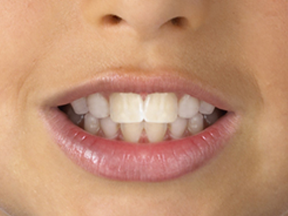
Phase I
Phase I treatment is also referred to as early intervention and is performed on younger patients who have a mix of permanent and baby teeth around the age of 7-9 years of age. The purpose of Phase 1 treatment is to set the proper "foundation" for future dental and facial development as the patient becomes an adolescent and all the permanent teeth erupt. Young patients with a narrow upper jaw, narrow lower jaw, or a cross-bite are typically ideal candidates for early-intervention or Phase I treatment. Dr. Seligman can guide permanent teeth into their proper position by creating necessary space and aligning the existing teeth. The second phase of treatment will take place once the permanent teeth have erupted. In most cases, Phase I treatment reduces the length of time and level of invasiveness required for the second phase.
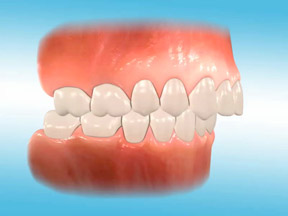
Class II
Class II problems refer to abnormal bite in which the upper jaw and teeth are located in front of the lower jaw and teeth. Patients diagnosed with Class II problems typically exhibit a convex facial profile with a recessed chin. Class II problems are normally genetic.
A skeletal Class II problem is diagnosed when the upper back molars are further forward than the lower back molars. This problem gives the patient the appearance of a recessed lower jaw or an upper jaw that is protrusive.

Class III
Class III problems are also primarily inherited genetically. In this type of malformation, the lower jaw and teeth are positioned in front of the upper jaw and teeth. Visually, the lower jaw looks excessively large, but in most cases the upper jaw is underdeveloped. There are many treatment options available to correct a Class III problem.
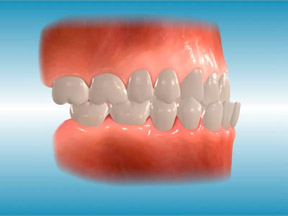
Pseudo Class III
Unlike a skeletal Class III problem, a pseudo Class III is a result of habit and not hereditary. A misaligned bite can cause the lower teeth to bite forward of the upper teeth and therefore give the appearance of a Class III problem.
Phase I treatment is necessary to prevent abnormal growth of both the upper and lower jaws.
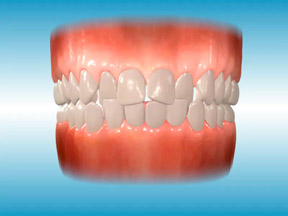
Crowding
Crowding of the teeth is probably the most common orthodontic problem. This orthodontic issue usually has a simple cause: the jaw is not large enough for the size of the teeth. Although, cross-bite of the front or rear teeth can also cause the teeth to become crowded.
Crowding is typically part of a more complex case of orthodontic issues because crowding itself leads to other problems such as impacted teeth and retained teeth (baby teeth that do not naturally fall out).

Spacing
Spaces between teeth are another common orthodontic problem. Like crowding, spacing may be related to a bad tooth-to-jaw size proportion. Spacing can occur between the front and back teeth. Discrepancies in teeth size, such as smaller teeth or abnormally shaped teeth, can also create abnormal spaces between the teeth.
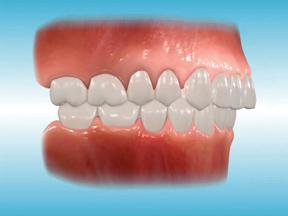
Deep Incisor Overbite
A deep bite or overbite is an excessive vertical overlapping of the front teeth and usually occurs when upper and lower jaws are different lengths. This problem is usually accompanied by an excessive eruption of the upper and/or lower incisors.
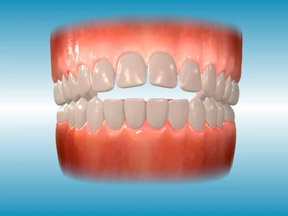
Openbite
An openbite can occur with the front teeth, known as an anterior openbite or with the back teeth, referred to as a posterior openbite. An anterior openbite is the lack of vertical overlap of the front teeth and can usually be traced to jaw disharmony or habits such as thumb sucking or the thrusting of the tongue against the front teeth. A posterior openbite is a problem in which the back teeth do not meet vertically prohibiting the jaw to function properly.
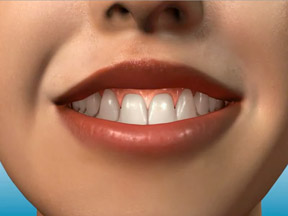
Excess Gingival Display
This condition can be described as a gummy smile which gives the appearance of excessive exposed gums on the upper arch. Several treatment options for this problem are available including surgery for severe cases. In surgery, a section of the upper jaw is removed, therefore shifting the jaw upward vertically and reducing the amount of upper gum tissue that is exposed.
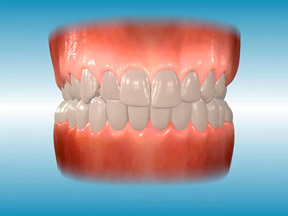
Posterior Crossbite
A posterior cross-bite is typically caused by a narrow upper jaw or abnormally wide lower jaw. A narrow upper jaw forces the patient to move their lower jaw forward or to the side when closing into a bite. When closed, the lower teeth will be located outside the upper teeth.
A posterior unilateral cross-bite involves one side of the jaw. A bilateral posterior cross-bite will involve both sides of the jaw.








